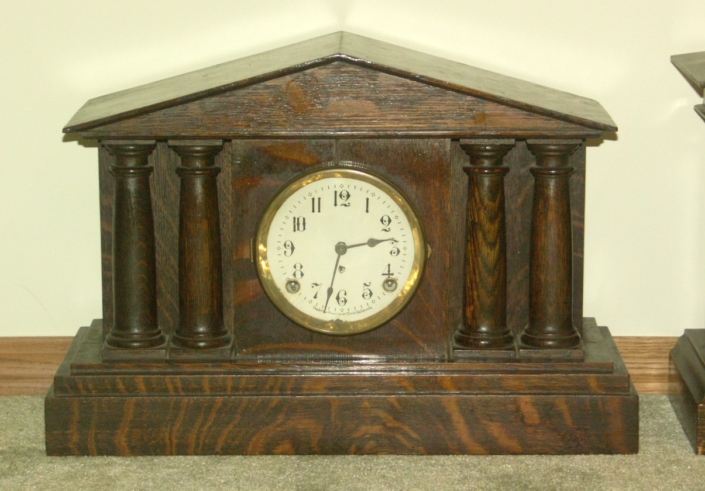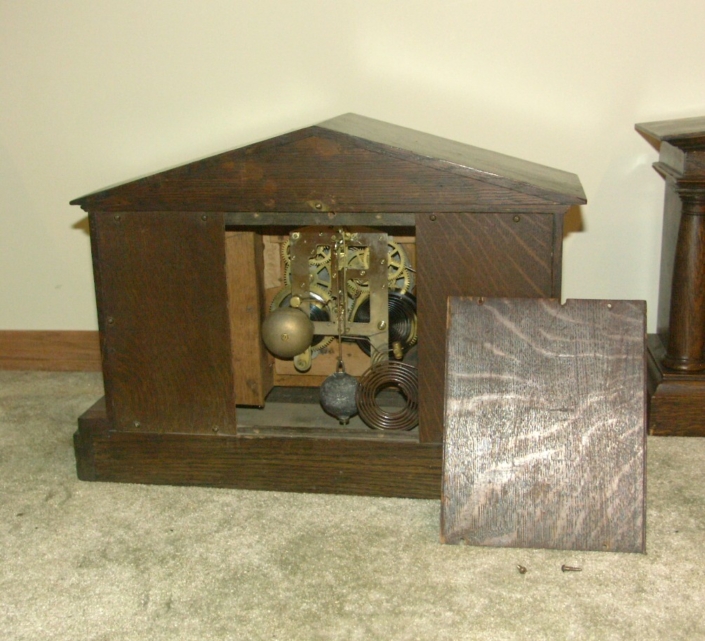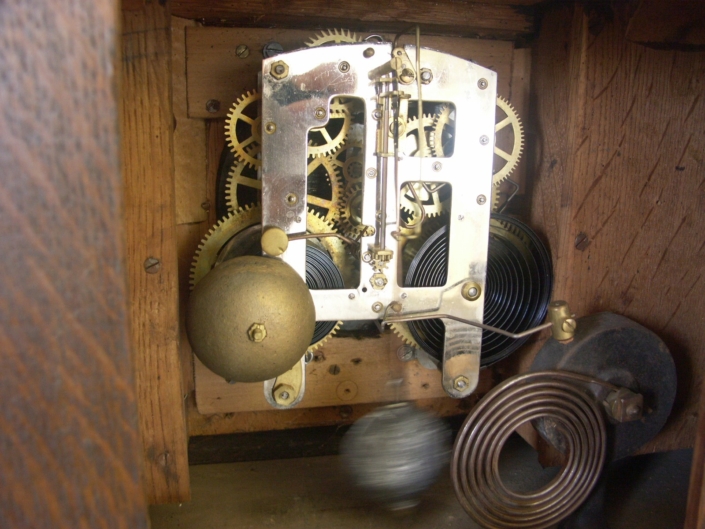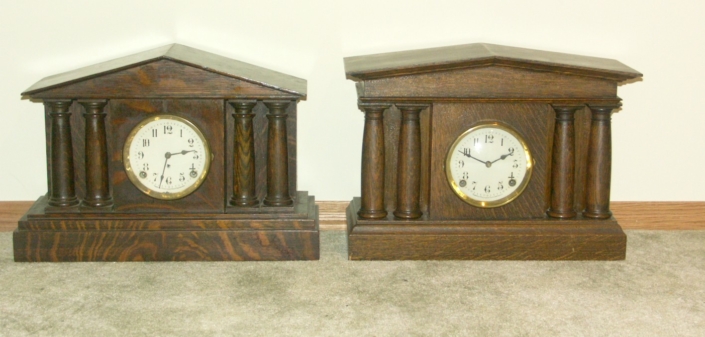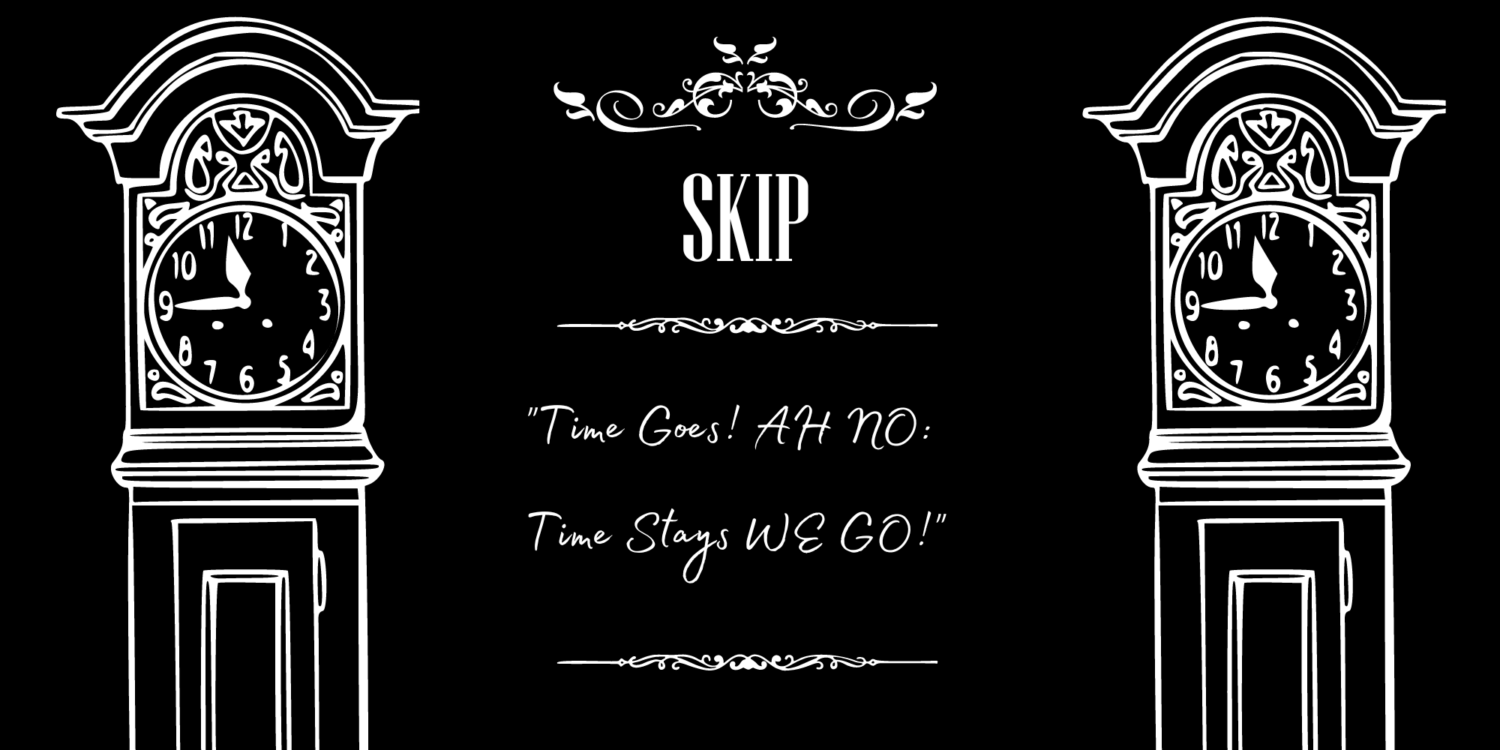Pantheon – Variant (2)
This is an interesting variant on the “Pantheon” model. The first, and most obvious difference is the much steeper pitch of the roof on the variant. It is also noted that the roof (17 1/4 inches) isn’t as wide as its base (19 inches), when on the catalogued version they are both the same width. The pillars are also shorter on the variant version but the base itself is also built higher, making the height from the bottom of the base to the top if the pillars virtually the same (10 1/2 inches) on both versions.
The clock measures 13 inches high, by 19 inches wide and is 7 inches deep. It has the typical 8 day movement with the gong for the hours and the bell for the half hours. There is no label on the clock, nor does it appear that there was at any time.
We’ll never know for sure, but I tend to think the clock was most likely a prototype. I wouldn’t be surprised if the clock was produced in the period between the phasing out of the “Panthenon” model and the introduction of the very similar “Pantheon” model (in and around 1913).
Jim Connell (Author of The Charlton Standard Catalogue of Canadian Clocks) wrote:
Yes this is an unusual variant. I can think of 3 possibilities. (1) a prototype for a revised case style or (2) a clock made privately by a person who liked to do his own thing, or (3) a case by some other maker which was fitted later with a Peq. movement and dial. (I lean toward #(2).
Since there do not seem to be any ‘standard’ wooden Peq. parts in the case, I would be a bit doubtful that this was made by the company as a variant. When they switched styling around, one can usually find a familiar moulding or column or some other part that came off the shelf. On the other hand, if someone else made the case, it would not be standardized in any way. Oak lumber and brown stains were readily available.
I also wonder about the dial. All my mantels with the slow-fast opening have S & F printed on the dial. This example does not, and appears to have been a painted dial where someone put the hole in afterwards. In my own group, all the ‘Second Arabic’ dials with SF are hard enamel where this one is painted, which again suggests somebody made the clock at home with available parts.
Looking in my Tran Duy Ly catalogs I could not find any matching cases by other makers.
Finally since I am being the devil’s advocate, I have to say that I don’t think it was made between the Panthenon and the Pantheon. I strongly believe that Panthenon was simply a mistake in spelling by Arthur or the printer, (confusing the Parthenon and the Pantheon).They used up the wrong labels first and then corrected the error. The early examples of this clock can be found with either label.

